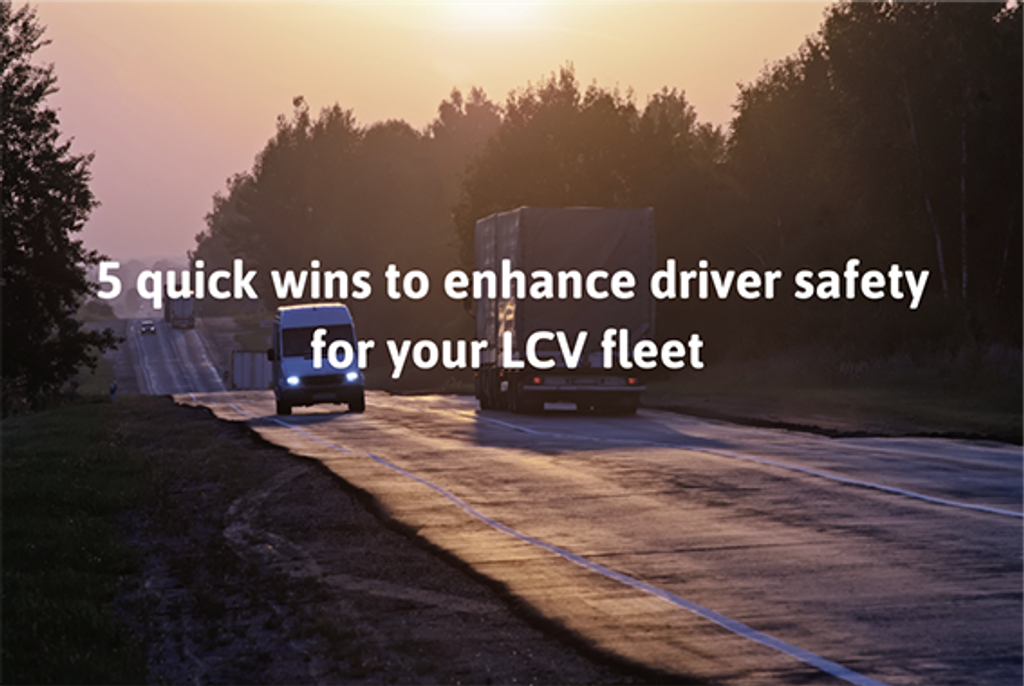
Indeed, this stereotype is untrue of all LCV drivers, however recent data indicates LCVs are involved in a greater number of serious accidents than HGVs. In 2019, vans and light goods vehicles were involved in 12,576 road accidents, with 2,861 of them resulting in serious injury or a fatality.
Comparatively, HGVs were involved in only 1,242 accidents resulting in serious injury or a fatality. Considering the drastic difference in size and weight between the vehicles, it raises the question why LCV fleets are less safe and are involved in more than double the number of accidents.
The number of serious accidents involving LCVs has been on an upward trend since 2015. So, what can be done? In this blog, we offer 5 easy ways to ensure LCV fleets are safer on the road, in turn protecting drivers, their company, and other road users.
1. Define safety goals
If you have not already, it is a good idea to introduce a safety policy to your team. This way, everyone knows what your rules and regulations are as a company, and what standards your team will be held to.
Also, creating goals for your team based on real data from your fleet can help to keep the team on track, and build some motivation to drive safely. Data gained from vehicle tracking can help you to set achievable goals, both for individuals and the fleet as a whole.
2. Maintain your vehicles
Sometimes, driving style has nothing to do with the reason why an accident has occurred, and it is a result of a poorly maintained vehicle. LCVs just like any other vehicle should undergo regular maintenance, MOTs, and daily vehicle checks.
This way, you can be sure your team are driving in vehicles fit for the road, and you have taken the right preventative steps to avoid accidents from occurring.
3. Introduce safety technology
Investing in fleet safety technology saves you money in the long run and can have a significant impact on your fleet’s safety and accident rates. Installing dash cameras on your vehicles, such as a forward facing 4G dash camera for example, encourages your drivers to be mindful of their driving style by creating driver accountability. Also, should an accident occur, you have evidential footage in HD quality to show exactly what happened. Dash cameras are seen more and more in car users and HGVs, so it is wise to protect your LCV too.
Pair camera technology with telematics, and you gain important data to help your drivers elevate their safety levels even further. The data enables you to monitor current safety standards, set benchmarks and goals for improvements, and identify who your most at-risk drivers are.
4. Provide regular feedback and retraining
With safety technology installed across your fleet, it becomes possible to provide your team with tailored feedback and training. Giving specific examples and guidance led by real-life data means you can show your team how to improve their driver performance in a targeted way.
Furthermore, camera footage and telematics data can be used to conduct post-accident analysis and debrief. Additional information on the vehicle’s location, speed, and g-force data is overlaid onto the dashcam footage. Therefore, you can see what the dash camera has captured with extra contextual information showing how the vehicle was being operated. Then, you can review what went wrong and understand how to avoid it happening in the future.
5. Incentivize your drivers
A great way to keep safety at the forefront of your team’s mind is to incentivize good driving. Perhaps with monetary bonuses or prizes. Having incentives and team goals can insight healthy some competition, and we have found companies who use league tables to highlight the top performers of their fleet get great results.
Also, these changes in behavior can have a significant impact on your company’s bottom-line. Safer driving styles save you money on fuel, as well as accident and repair costs. Furthermore, lower accident rates and safety precautions can see your insurance premiums decrease.
Although it may seem like a mountainous task, getting your LCV fleet safety under control can take less than you would expect. Putting the right measures in place now could see you fleet turn a corner in just a few short months. Saving you time, money, and most importantly improving the safety of your drivers while out on the road.
Find out how to optimize your LCV fleet by contacting us today.
